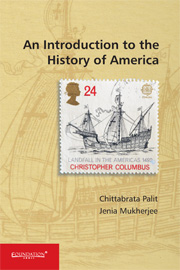Book contents
- Frontmatter
- Contents
- Preface
- Timeline of Events
- 1 An Early History: From Settlement to Colonization
- 2 The American War of Independence
- 3 The Formative Period: The Era of Solidarity and Expansion
- 4 ‘Two Americas’: Regional Differences and Sectional Conflicts
- 5 Agrarian and Industrial Revolutions
- 6 Resisting Voices
- 7 American Foreign Policy: Post-Monroe Doctrine to World War I
- 8 The Great Crisis and Its Recovery
- 9 The Rise of America: WWII and After
- 10 The Quest for Equality
- 11 American Environmentalism and Environmental History
- Epilogue: Perceiving American History Beyond the ‘Exceptionalist’ Framework
- Index
8 - The Great Crisis and Its Recovery
Published online by Cambridge University Press: 05 April 2014
- Frontmatter
- Contents
- Preface
- Timeline of Events
- 1 An Early History: From Settlement to Colonization
- 2 The American War of Independence
- 3 The Formative Period: The Era of Solidarity and Expansion
- 4 ‘Two Americas’: Regional Differences and Sectional Conflicts
- 5 Agrarian and Industrial Revolutions
- 6 Resisting Voices
- 7 American Foreign Policy: Post-Monroe Doctrine to World War I
- 8 The Great Crisis and Its Recovery
- 9 The Rise of America: WWII and After
- 10 The Quest for Equality
- 11 American Environmentalism and Environmental History
- Epilogue: Perceiving American History Beyond the ‘Exceptionalist’ Framework
- Index
Summary
This chapter is on the Great Depression of 1929 that marked the dawn of a new era of plenitude and prosperity. The impact of the American economic depression was severe at the home front and the European world and its colonies. By throwing light on various economic theories and arguments like that of the classical theories, Keynesian economics, debt-deflation analyses, etc., it tries to answer the most intriguing question concerning generation of scholars: Did the crash occur suddenly? While the first section generates pessimism, the next one is of hope when US followed the path of economic recovery under New Deal of Franklin D. Roosevelt. The chapter ends with the outbreak of the WWII.
a. The Great Depression of 1929
The hopeful era ushered in by Harding and Coolidge in the post-WWI period, proved to be short lived. Coming a long way from Wilsonian idealism, America in the 1920s, gave itself over to crass materialism and to ruthless making and spending of money. When Herbert Clark Hoover became the President in 1929, the nation thrived in affluence, which inspired the new president to comment, ‘we in America are nearer to the final triumph over poverty than ever before in the history of any land.’ There was boom in big business and technological goods and factory productions could not keep up with the increasing greed for newer and newer gadgets; stocks and shares skyrocketed. It was the dawn of a new era of plenitude and prosperity. But this euphoria did not last long.
- Type
- Chapter
- Information
- An Introduction to the History of America , pp. 179 - 195Publisher: Foundation BooksPrint publication year: 2014

